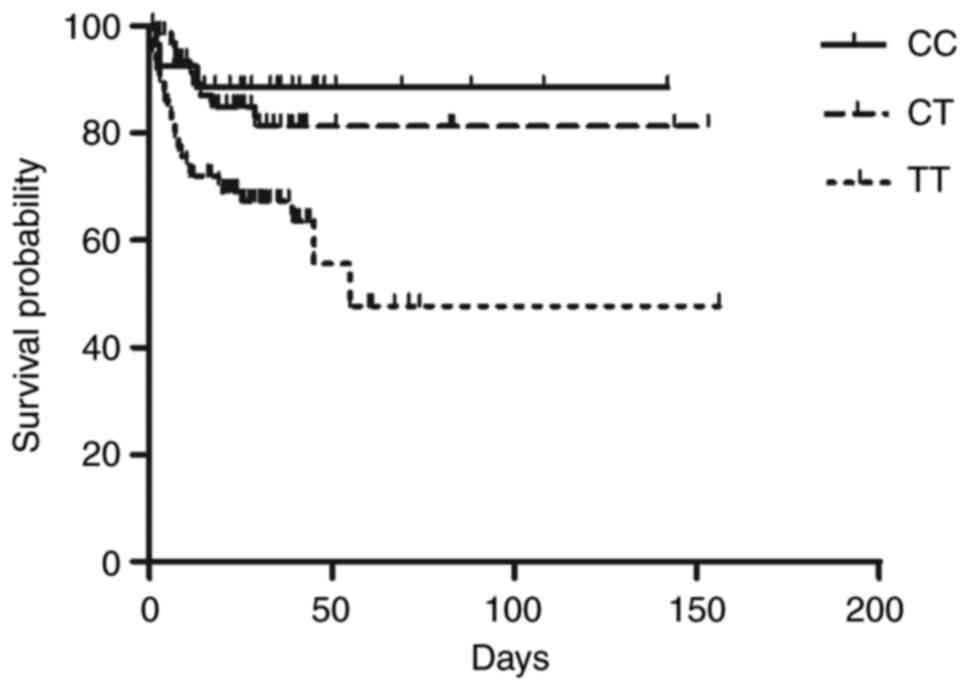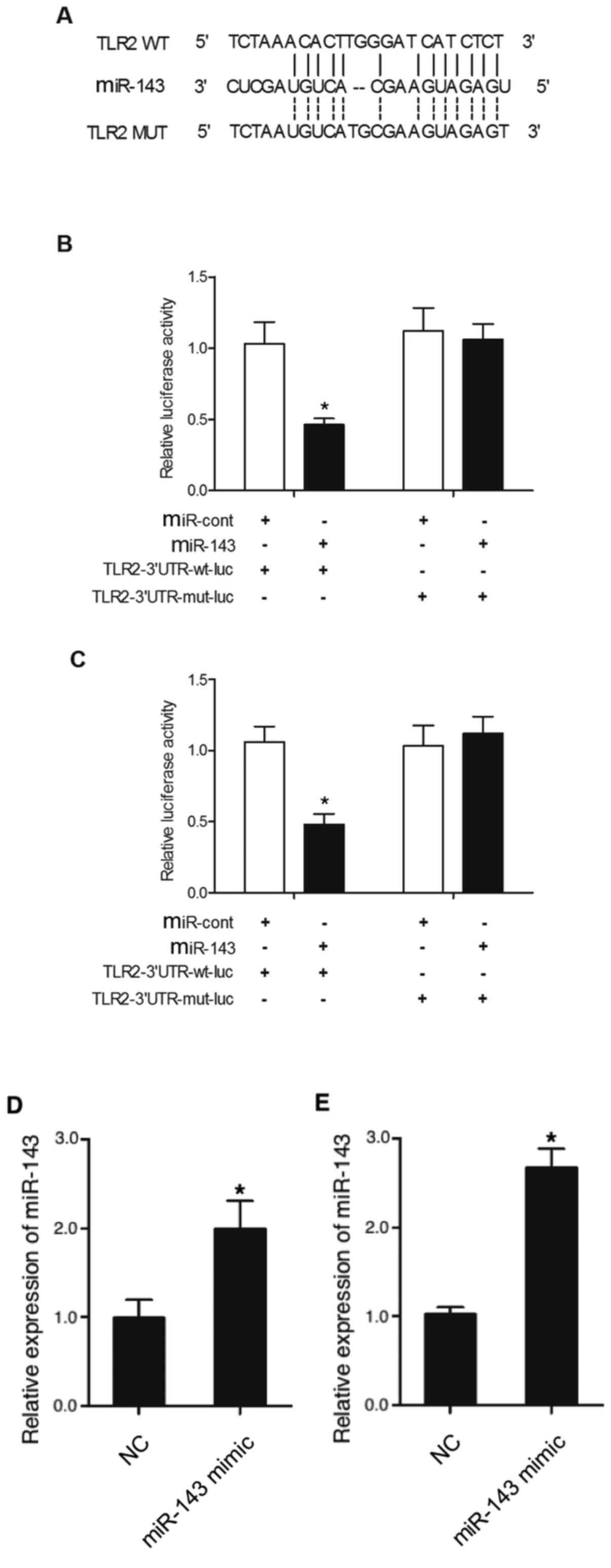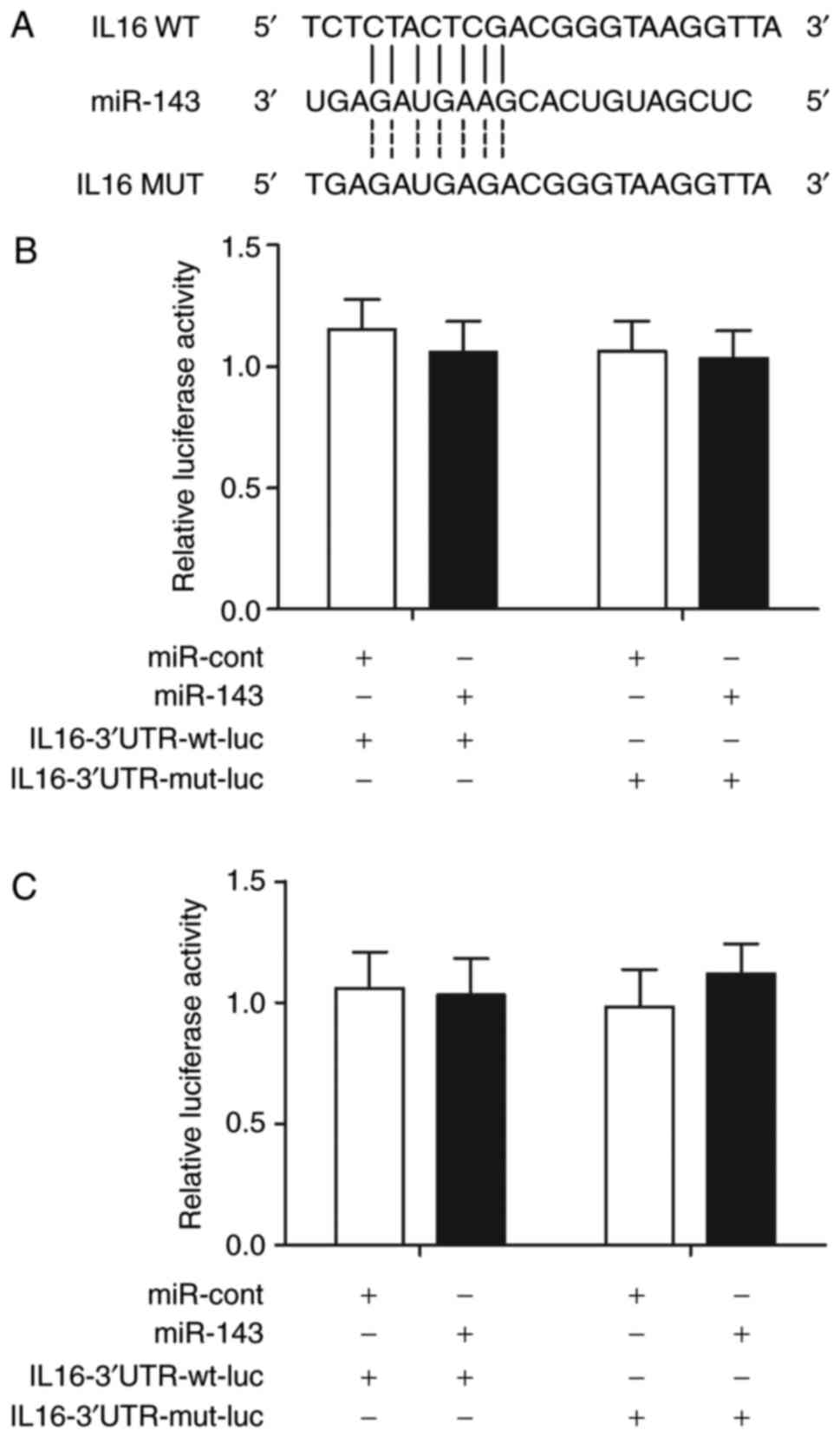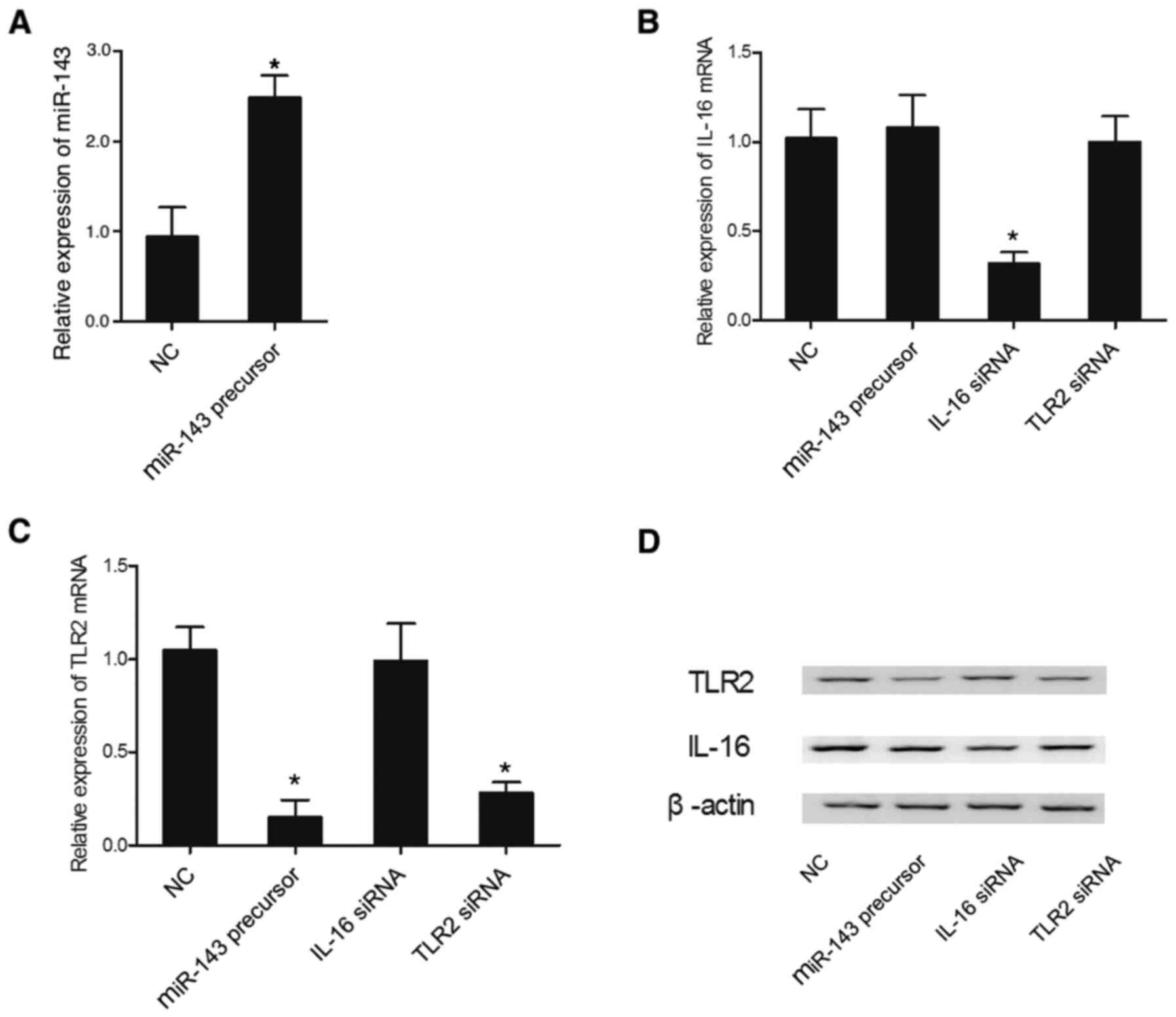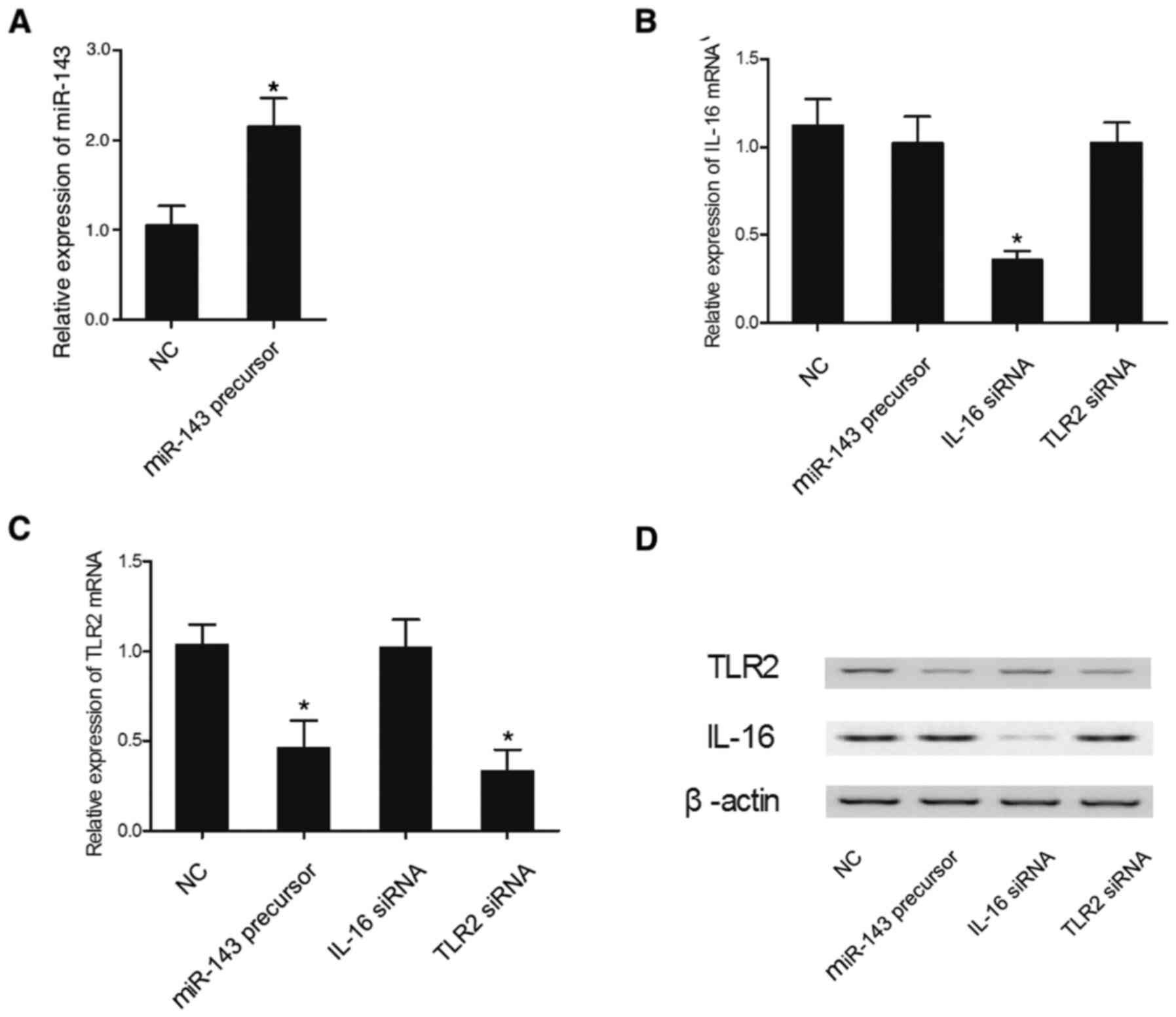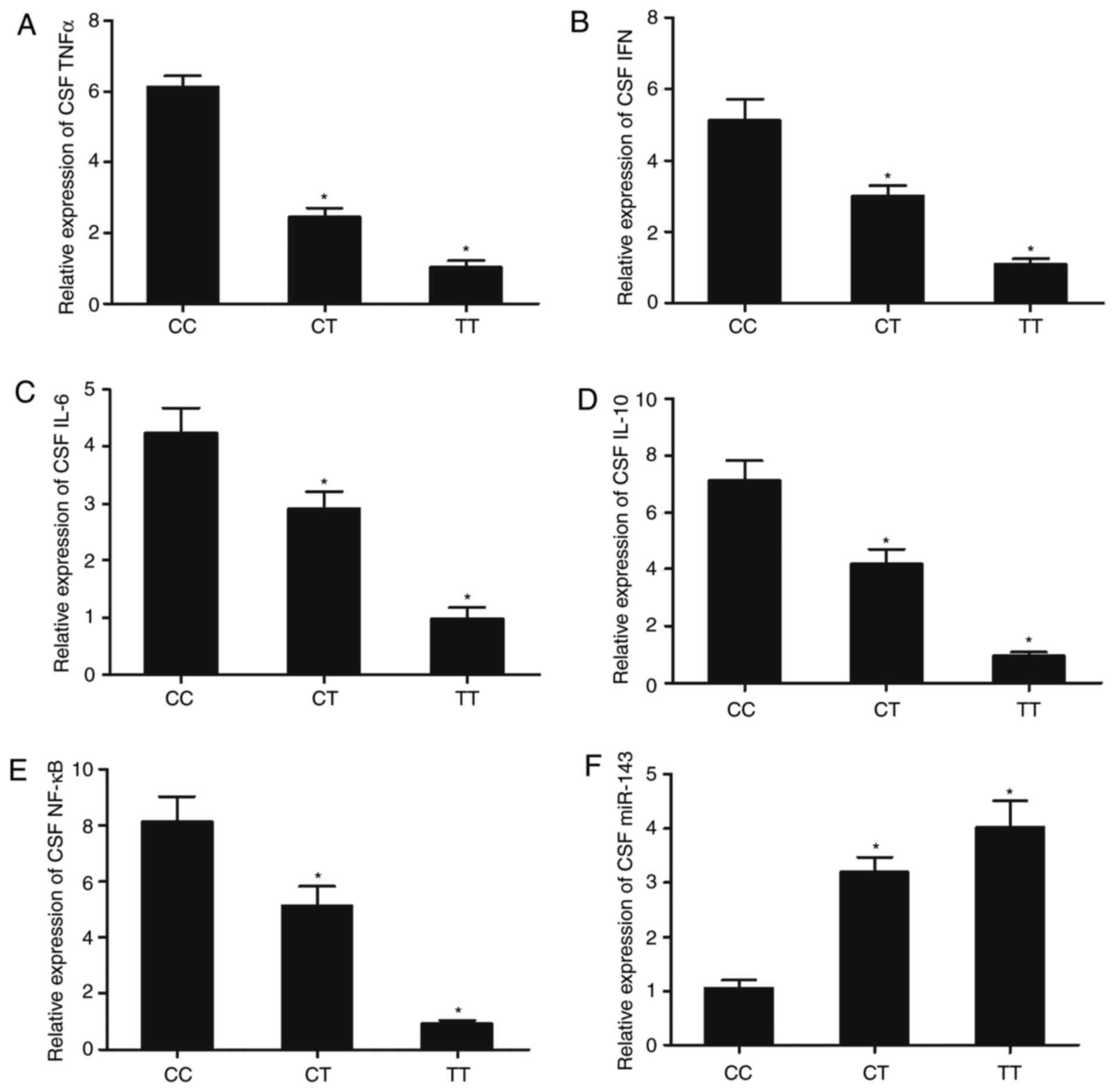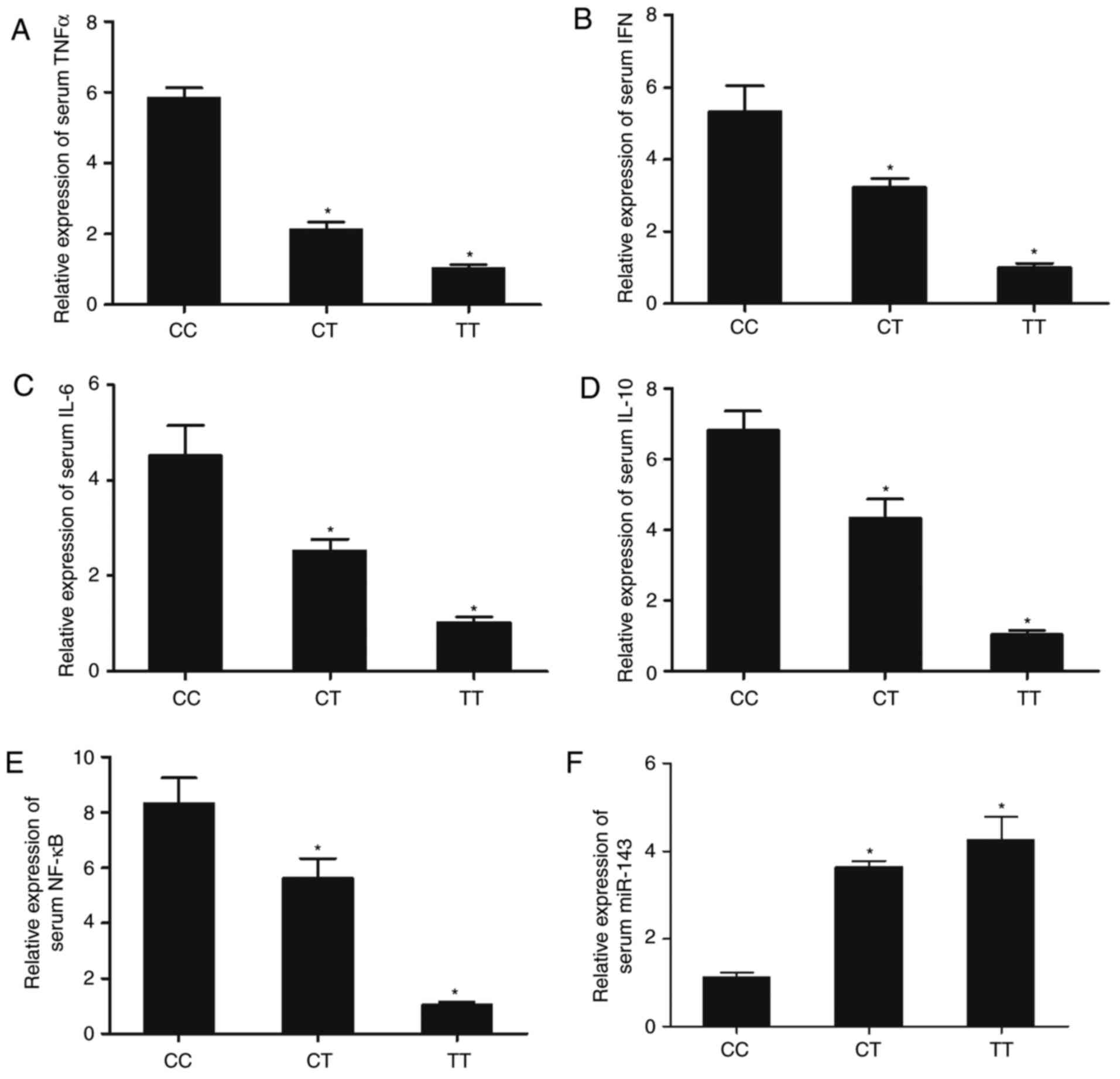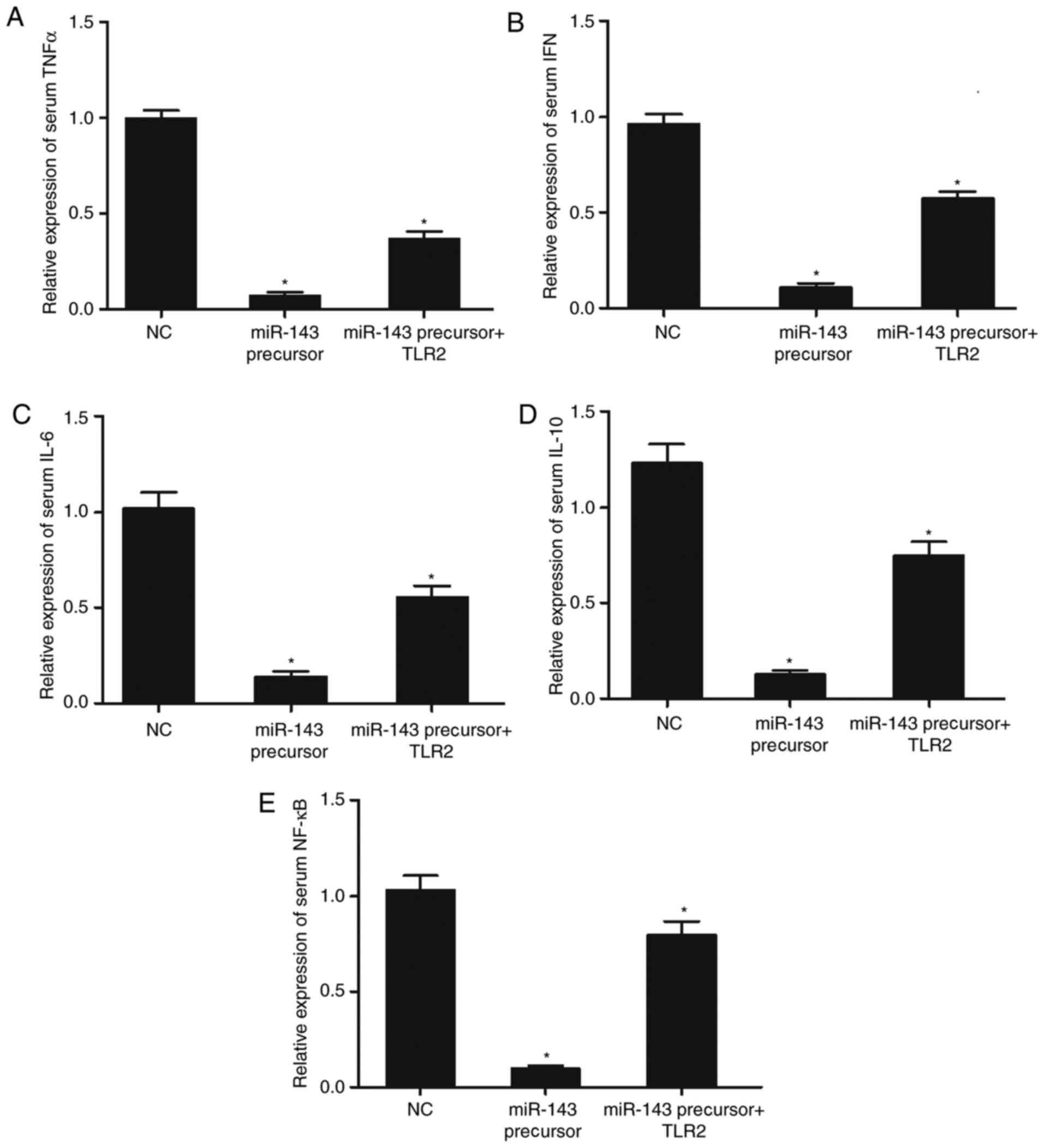|
1
|
Wang MD, Wang Y, Xia YP, Dai JW, Gao L,
Wang SQ, Wang HJ, Mao L, Li M, Yu SM, et al: High serum miR-130a
levels are associated with severe perihematomal edema and predict
adverse outcome in acute ICH. Mol Neurobiol. 53:1310–1321. 2016.
View Article : Google Scholar : PubMed/NCBI
|
|
2
|
Rincon F, Friedman DP, Bell R, Mayer SA
and Bray PF: Targeted temperature management after intracerebral
hemorrhage (TTM-ICH): Methodology of a prospective randomized
clinical trial. Int J Stroke. 9:646–651. 2014. View Article : Google Scholar : PubMed/NCBI
|
|
3
|
Zhang Y, Chen Y, Wu J, Manaenko A, Yang P,
Tang J, Fu W and Zhang JH: Activation of dopamine D2 receptor
suppresses neuroinflammation through αB-crystalline by inhibition
of NF-κB nuclear translocation in experimental ICH mice model.
Stroke. 46:2637–2646. 2015. View Article : Google Scholar : PubMed/NCBI
|
|
4
|
Xu C, Wang T, Cheng S and Liu Y: Increased
expression of T cell immunoglobulin and mucin domain 3 aggravates
brain inflammation via regulation of the function of
microglia/macrophages after intracerebral hemorrhage in mice. J
Neuroinflammation. 10:1412013. View Article : Google Scholar : PubMed/NCBI
|
|
5
|
Chen M, Li X, Zhang X, He X, Lai L, Liu Y,
Zhu G, Li W, Li H, Fang Q, et al: The inhibitory effect of
mesenchymal stem cell on blood-brain barrier disruption following
intracerebral hemorrhage in rats: Contribution of TSG-6. J
Neuroinflammation. 12:612015. View Article : Google Scholar : PubMed/NCBI
|
|
6
|
Lei B, Dawson HN, Roulhac-Wilson B, Wang
H, Laskowitz DT and James ML: Tumor necrosis factor α antagonism
improves neurological recovery in murine intracerebral hemorrhage.
J Neuroinflammation. 10:1032013. View Article : Google Scholar : PubMed/NCBI
|
|
7
|
Harder LM, Bunkenborg J and Andersen JS:
Inducing autophagy: A comparative phosphoproteomic study of the
cellular response to ammonia and rapamycin. Autophagy. 10:339–355.
2014. View Article : Google Scholar : PubMed/NCBI
|
|
8
|
Wakisaka Y, Chu Y, Miller JD, Rosenberg GA
and Heistad DD: Spontaneous intracerebral hemorrhage during acute
and chronic hypertension in mice. J Cereb Blood Flow Metab.
30:56–69. 2010. View Article : Google Scholar : PubMed/NCBI
|
|
9
|
Rincon F and Mayer SA: Novel therapies for
intracerebral hemorrhage. Curr Opin Crit Care. 10:94–100. 2004.
View Article : Google Scholar : PubMed/NCBI
|
|
10
|
Bartel DP: MicroRNAs: Target recognition
and regulatory functions. Cell. 136:215–233. 2009. View Article : Google Scholar : PubMed/NCBI
|
|
11
|
Nadal E, Truini A, Nakata A, Lin J, Reddy
RM, Chang AC, Ramnath N, Gotoh N, Beer DG and Chen G: A novel serum
4-microRNA signature for lung cancer detection. Sci Rep.
5:124642015. View Article : Google Scholar : PubMed/NCBI
|
|
12
|
Akao Y, Nakagawa Y and Naoe T: MicroRNAs
143 and 145 are possible common onco-microRNAs in human cancers.
Oncol Rep. 16:845–850. 2006.PubMed/NCBI
|
|
13
|
Starczynowski DT, Kuchenbauer F,
Argiropoulos B, Sung S, Morin R, Muranyi A, Hirst M, Hogge D, Marra
M, Wells RA, et al: Identification of miR-145 and miR-146a as
mediators of the 5q-syndrome phenotype. Nat Med. 16:49–58. 2010.
View Article : Google Scholar : PubMed/NCBI
|
|
14
|
Xie H, Lim B and Lodish HF: MicroRNAs
induced during adipogenesis that accelerate fat cell development
are downregulated in obesity. Diabetes. 58:1050–1057. 2009.
View Article : Google Scholar : PubMed/NCBI
|
|
15
|
Cordes KR, Sheehy NT, White MP, Berry EC,
Morton SU, Muth AN, Lee TH, Miano JM, Ivey KN and Srivastava D:
miR-145 and miR-143 regulate smooth muscle cell fate and
plasticity. Nature. 460:705–710. 2009. View Article : Google Scholar : PubMed/NCBI
|
|
16
|
Li L, Pan X, Li Z, Bai P, Jin H, Wang T,
Song C, Zhang L and Gao L: Association between polymorphisms in the
promoter region of miR-143/145 and risk of colorectal cancer. Hum
Immunol. 74:993–997. 2013. View Article : Google Scholar : PubMed/NCBI
|
|
17
|
Wu D, Huang P, Wang L, Zhou Y, Pan H and
Qu P: MicroRNA-143 inhibits cell migration and invasion by
targeting matrix metalloproteinase 13 in prostate cancer. Mol Med
Rep. 8:626–630. 2013. View Article : Google Scholar : PubMed/NCBI
|
|
18
|
Yin X, Sun S, Zhao J, Yang J, Lei X, Xu C
and Li K: Rs4705342 polymorphism is involved in the tumorigenesis
of HBV positive HCC by altering the binding affinity of HBV induced
NF-κB with the promoter region of microRNA-143. J Cell Biochem.
119:5233–5242. 2018. View Article : Google Scholar : PubMed/NCBI
|
|
19
|
Liu X, Gong J and Xu B: miR-143
down-regulates TLR2 expression in hepatoma cells and inhibits
hepatoma cell proliferation and invasion. Int J Clin Exp Pathol.
8:12738–12747. 2015.PubMed/NCBI
|
|
20
|
Min H, Hong J, Cho IH, Jang YH, Lee H, Kim
D, Yu SW, Lee S and Lee SJ: TLR2-induced astrocyte MMP9 activation
compromises the blood brain barrier and exacerbates intracerebral
hemorrhage in animal models. Mol Brain. 8:232015. View Article : Google Scholar : PubMed/NCBI
|
|
21
|
Wang YC, Zhou Y, Fang H, Lin S, Wang PF,
Xiong RP, Chen J, Xiong XY, Lv FL, Liang QL and Yang QW: Toll-like
receptor 2/4 heterodimer mediates inflammatory injury in
intracerebral hemorrhage. Ann Neurol. 75:876–889. 2014. View Article : Google Scholar : PubMed/NCBI
|
|
22
|
Livak KJ and Schmittgen TD: Analysis of
relative gene expression data using real-time quantitative PCR and
the 2(-Delta Delta C(T)) method. Methods. 25:402–408. 2001.
View Article : Google Scholar : PubMed/NCBI
|
|
23
|
Burns JD, Fisher JL and
Cervantes-Arslanian AM: Recent advances in the acute management of
intracerebral hemorrhage. Neurosurg Clin N Am. 29:263–272. 2018.
View Article : Google Scholar : PubMed/NCBI
|
|
24
|
Bernales S, Schuck S and Walter P:
ER-phagy: Selective autophagy of the endoplasmic reticulum.
Autophagy. 3:285–287. 2007. View Article : Google Scholar : PubMed/NCBI
|
|
25
|
Bampton ET, Goemans CG, Niranjan D,
Mizushima N and Tolkovsky AM: The dynamics of autophagy visualized
in live cells: From autophagosome formation to fusion with
endo/lysosomes. Autophagy. 1:23–36. 2005. View Article : Google Scholar : PubMed/NCBI
|
|
26
|
Bai Y, Zhang Y, Han B, Yang L, Chen X,
Huang R, Wu F, Chao J, Liu P, Hu G, et al: Circular RNA DLGAP4
ameliorates ischemic stroke outcomes by targeting miR-143 to
regulate endothelial-mesenchymal transition associated with
blood-brain barrier integrity. J Neurosci. 38:32–50. 2018.
View Article : Google Scholar : PubMed/NCBI
|
|
27
|
Park JS, Svetkauskaite D, He Q, Kim JY,
Strassheim D, Ishizaka A and Abraham E: Involvement of toll-like
receptors 2 and 4 in cellular activation by high mobility group box
1 protein. J Biol Chem. 279:7370–7377. 2004. View Article : Google Scholar : PubMed/NCBI
|
|
28
|
Huang QQ, Sobkoviak R, Jockheck-Clark AR,
Shi B, Mandelin AM II, Tak PP, Haines GK III, Nicchitta CV and Pope
RM: Heat shock protein 96 is elevated in rheumatoid arthritis and
activates macrophages primarily via TLR2 signaling. J Immunol.
182:4965–4973. 2009. View Article : Google Scholar : PubMed/NCBI
|
|
29
|
Ohashi K, Burkart V, Flohé S and Kolb H:
Cutting edge: Heat shock protein 60 is a putative endogenous ligand
of the toll-like receptor-4 complex. J Immunol. 164:558–561. 2000.
View Article : Google Scholar : PubMed/NCBI
|
|
30
|
Vabulas RM, Ahmad-Nejad P, Ghose S,
Kirschning CJ, Issels RD and Wagner H: HSP70 as endogenous stimulus
of the Toll/interleukin-1 receptor signal pathway. J Biol Chem.
277:15107–15112. 2002. View Article : Google Scholar : PubMed/NCBI
|
|
31
|
Termeer C, Benedix F, Sleeman J, Fieber C,
Voith U, Ahrens T, Miyake K, Freudenberg M, Galanos C and Simon JC:
Oligosaccharides of hyaluronan activate dendritic cells via
toll-like receptor 4. J Exp Med. 195:99–111. 2002. View Article : Google Scholar : PubMed/NCBI
|
|
32
|
Bsibsi M, Bajramovic JJ, Van
Duijvenvoorden E, Persoon C, Ravid R, Van Noort JM and Vogt MH:
Identification of soluble CD14 as an endogenous agonist for
Toll-like receptor 2 on human astrocytes by genome-scale functional
screening of glial cell derived proteins. Glia. 55:473–482. 2007.
View Article : Google Scholar : PubMed/NCBI
|
|
33
|
Hanke ML and Kielian T: Toll-like
receptors in health and disease in the brain: Mechanisms and
therapeutic potential. Clin Sci (Lond). 121:367–387. 2011.
View Article : Google Scholar : PubMed/NCBI
|
|
34
|
Lehnardt S: Innate immunity and
neuroinflammation in the CNS: The role of microglia in Toll-like
receptor-mediated neuronal injury. Glia. 58:253–263.
2010.PubMed/NCBI
|
|
35
|
Weiss SJ: Tissue destruction by
neutrophils. N Engl J Med. 320:365–376. 1989. View Article : Google Scholar : PubMed/NCBI
|
|
36
|
Albers DS and Beal MF: Mitochondrial
dysfunction and oxidative stress in aging and neurodegenerative
disease. J Neural Transm Suppl. 59:133–154. 2000.PubMed/NCBI
|
|
37
|
Franklin JL: Redox regulation of the
intrinsic pathway in neuronal apoptosis. Antioxid Redox Signal.
14:1437–1448. 2011. View Article : Google Scholar : PubMed/NCBI
|
|
38
|
Valencia A and Morán J: Reactive oxygen
species induce different cell death mechanisms in cultured neurons.
Free Radic Biol Med. 36:1112–1125. 2004. View Article : Google Scholar : PubMed/NCBI
|
|
39
|
Guo H, Chen Y, Hu X, Qian G, Ge S and
Zhang J: The regulation of Toll-like receptor 2 by miR-143
suppresses the invasion and migration of a subset of human
colorectal carcinoma cells. Mol Cancer. 12:772013. View Article : Google Scholar : PubMed/NCBI
|
|
40
|
Ma Q, Jiang Q, Pu Q, Zhang X, Yang W, Wang
Y, Ye S, Wu S, Zhong G, Ren J, et al: MicroRNA-143 inhibits
migration and invasion of human non-small-cell lung cancer and its
relative mechanism. Int J Biol Sci. 9:680–692. 2013. View Article : Google Scholar : PubMed/NCBI
|
|
41
|
Ni Y, Meng L, Wang L, Dong W, Shen H, Wang
G, Liu Q and Du J: MicroRNA-143 functions as a tumor suppressor in
human esophageal squamous cell carcinoma. Gene. 517:197–204. 2013.
View Article : Google Scholar : PubMed/NCBI
|
|
42
|
Zhang Y, Wang Z, Chen M, Peng L, Wang X,
Ma Q, Ma F and Jiang B: MicroRNA-143 targets MACC1 to inhibit cell
invasion and migration in colorectal cancer. Mol Cancer. 11:232012.
View Article : Google Scholar : PubMed/NCBI
|
|
43
|
Deacon DC, Nevis KR, Cashman TJ, Zhou Y,
Zhao L, Washko D, Guner-Ataman B, Burns CG and Burns CE: The
miR-143-adducin3 pathway is essential for cardiac chamber
morphogenesis. Development. 137:1887–1896. 2010. View Article : Google Scholar : PubMed/NCBI
|
|
44
|
Miyasaka KY, Kida YS, Banjo T, Ueki Y,
Nagayama K, Matsumoto T, Sato M and Ogura T: Heartbeat regulates
cardiogenesis by suppressing retinoic acid signaling via expression
of miR-143. Mech Dev. 128:18–28. 2011. View Article : Google Scholar : PubMed/NCBI
|















